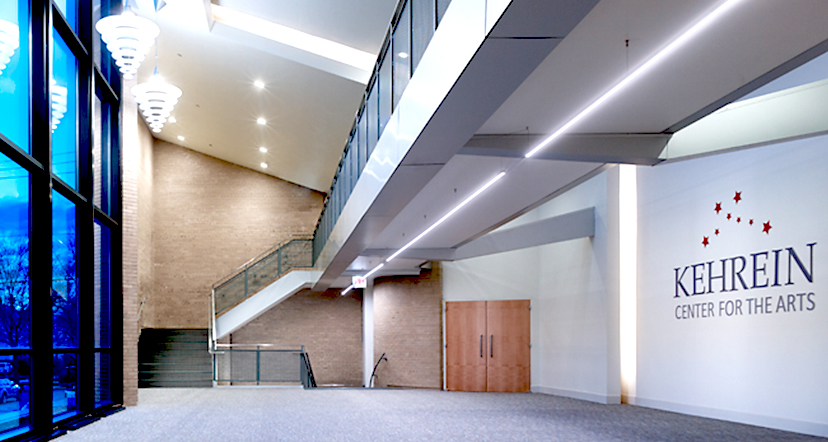Sizing up Impact in Chicago
Measuring the economic growth generated by a catalytic investment.
Published 02-18-22
Submitted by Mastercard

Originally published by The Mastercard Center for Inclusive Growth
By Kaity Hsieh & Meegan Dugan Adell
For nearly 50 years, a large historic building now known as the Kehrein Center for the Arts was just one of many shuttered properties on Chicago’s west side. It sits in a vibrant neighborhood known as Austin Chicago, which boasts a strong, active network of nonprofits and community activists. However, decades of disinvestment have been a challenge in the neighborhood. Among other things, sixty-five percent of households make under $50,000, in an area where seventy-five percent of residents are Black[1]. In 2019, this vacant property was transformed from a dormant building into a state-of-the-art auditorium through $5 million of grants and donations.
Multi-million dollar investments like this arts center are rare in communities like Austin, Chicago. Part of the reason is that it can be challenging to measure their economic benefits and prove their ROI. That’s why the Mastercard Center for Inclusive Growth and New America recently partnered on a philanthropic data analytics initiative to assess whether strategic investments can help catalyze significant economic growth in disinvested neighborhoods.
The Kehrein Center for the Arts was developed by a local organization called Catalyst Schools—in partnership with Rock of Our Salvation Church and Circle Urban Ministries—and is located on one of their campuses. “We have a big commitment to the community,” says Catalyst Schools co-founder, Edmund Siderewicz. “The school is not an island--it's part of the neighborhood and we stand arm in arm with our community partners and leaders.”
Siderewicz adds, “We worked tirelessly with local partners like Austin Coming Together to ensure that the project fully met community needs and is rooted in the neighborhood’s quality-of-life plan.” The renovation was funded through a mix of private donors and government grants. For example, it received a $1 million grant from the Chicago Neighborhood Opportunity Fund. State legislators also secured$1.25 million in capital grants[2]. Today, the space is a home for the Sistema Ravinia Orchestra and community conversations. After the center’s grand opening, its developers and donors alike waited to see how it would impact the neighborhood.
Our analysis found that the Kehrein Center for the Arts has not only brought music, community, and life to the neighborhood of Austin—but it also drove significant economic growth.
Mastercard generated spending insights that were based on anonymized and aggregated transaction data, and derived via robust analytic techniques. The analysis showed that the center triggered an economic revitalization, just as its developers had hoped. Indeed, this single investment had a domino effect across the entire commercial corridor where it is located[3]. The data showed:
- Increase in consumer spending. After the Kehrein Center for the Arts opened, there was a 12 percent increase in spending across Chicago’s Austin neighborhood. In the specific census tract where the arts center is located, there was an even more pronounced impact of a 20 percent lift in spending.
- Growth in out-of-town visitors. Not only was more revenue coming in, but the profile of Austin visitorschanged too. We saw a 24 percent increase in spending from travelers coming from further away (10 to 50 miles away from the center), indicating the neighborhood is increasingly seen as a destination for visitors from the surrounding area and suburbs.
- New business openings. In addition, there was a 2.6 percent growth in new business openings in the area after the arts center opened.
These insights were derived via Mastercard’s patented software, Test & Learn®, which uses a scientific method to measure the impact of a “test” scenario versus a “control” baseline. The platform is designed to pinpoint the true cause-and-effect of an investment with analytic precision. The software is typically licensed by corporations to measure the ROI on business investments; however, Mastercard volunteers also use the platform for pro-bono engagements such as this one.
One cornerstone of Mastercard’s Test & Learn® software is a set of algorithms that identify a relevant control group to serve as a baseline comparison point. In this analysis, the software identified that census tracts in local Chicago neighborhoods such as Rogers Park and Garfield Ridge[4] were similar to Austin based on key financial metrics—for example, economic growth trends, spending volumes, and seasonality in spending.
As you can see in the graph below, the Austin neighborhood sees significantly higher growth in spending after the center’s opening. However, before the center’s opening, Austin was trending very similarly with other neighborhoods.
Siderewicz notes “These new data insights really validate our mission to revitalize the neighborhood. Not only did the project drive positive community-building impact, but it also catalyzed economic growth.”
This novel use of test vs. control analytics in urban planning is just the beginning of a trend in making more data-driven policy decisions. It helps show that large, anchor investments can catalyze the revitalization of an entire economic corridor. Furthermore, it illustrates the concrete, lasting impact that strategic investments can have in low-income communities. And, it demonstrates that investing in the arts can yield meaningful returns far beyond the art space itself.
[1] https://www.cmap.illinois.gov/documents/10180/126764/Austin.pdf
[2] Representative La Shawn Ford, Majority Leader Senator Kimberly Lightford, and Rep. Camile Lilly
[3] Our analysis was conducted using data from January 2018 through June 2020. Given the beginning of the COVID pandemic in March 2020, the last three months of data were impacted by high unemployment rates and store closures.
[4] Rogers Park, Belmont Cragin, Portage Park, Garfield Ridge, Archer Heights, Englewood, and Mt. Greenwood were among the areas included in the “comparable neighborhoods” group for baseline comparison.
Originally published by The Mastercard Center for Inclusive Growth
Check out more content from The Mastercard Center for Inclusive Growth

Mastercard
Mastercard
About Mastercard
Mastercard is a global technology company in the payments industry. Our mission is to connect and power an inclusive, digital economy that benefits everyone, everywhere by making transactions safe, simple, smart and accessible. Using secure data and networks, partnerships and passion, our innovations and solutions help individuals, financial institutions, governments and businesses realize their greatest potential. With connections across more than 210 countries and territories, we are building a sustainable world that unlocks priceless possibilities for all.
More from Mastercard

